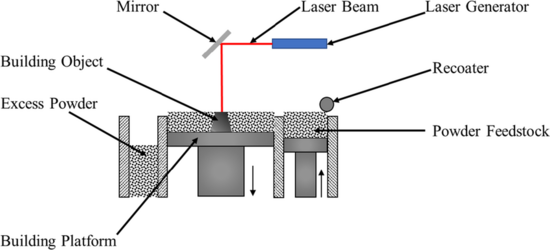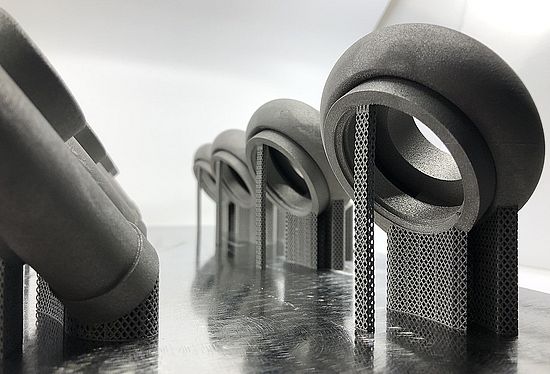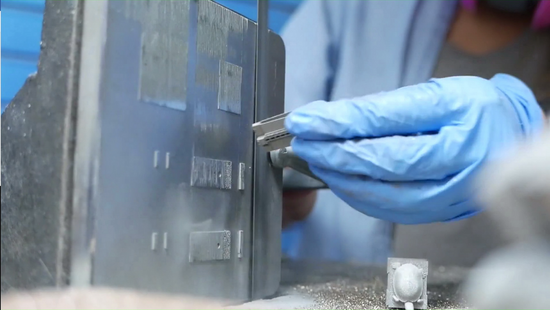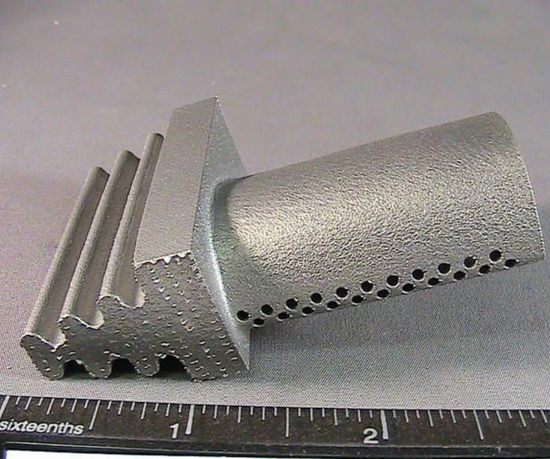
What is DLM 3D Printing ?
The abbreviation DLM, which stands for "Direct Laser Melting" (or "Direct Laser Metal"), can be loosely translated as: direct fusion with the laser. The laser melts the powdered metal, allowing the material to solidify into a specific shape.
In contrast to other 3D printing methods where material is precisely deposited, DLM involves selective melting.
The base material is fine-grained powder (with a particle size of approximately 35-50 μm), resembling dust.
The machine spreads the powder across the entireavailable build area where the component will be created. It only fuses the powder together in the regions where the component is meant to form.
While a 3D printer applies a new layer over an existing one, the laser penetrates the layer and slightly melts the layer beneath it, ensuring a perfect bond between the new and underlying layers. This results in a homogeneous 3D structure with near isotropic properties.
How does DLM 3D Printing Work?
In 3D packaging software, components are loaded, positioned, oriented, and arranged. The file with all positioned components is then loaded into a "slicing software," which generates the machine code and divides the component into layers of 0.05 mm thickness, attaching it to the base plate using support material.
The software also calculates the laser's path, considering the known shrinkage during component cooling. Consequently, the code represents layers that are slightly larger than the final component size. Once the code is ready, it is sent to the machine.
Next, the machine's supply container is filled with the desired material powder. The printing area heats up, and a slider or roller spreads a 0.05 mm thick layer across the entire surface. The laser from above "draws" the component in the powder. In the preheated printing area, the laser only needs to add the temperature delta to melt the powder. The powder melts where the laser contacts it.
This occurs under a protective atmosphere, often an inert gas like argon, to prevent material oxidation. Once the current layer is formed, the print bed moves down by 0.05 mm.
The next 0.05 mm of metal powder is applied, and the laser selectively melts it again. Since the laser retains some of its energy after 0.05 mm depth, it slightly remelts the layer below, ensuring complete fusion between the layers.
This process repeats until printingis complete.
When all layers are printed, the machine contains a print bed filled entirely with powder and finished components.
You can envision it as a heap of sand with the parts buried within. The components cool to room temperature within the powder. To prevent thermal distortion, the cooling process is slow.
Once the entire print bed reaches room temperature, the components are ready for post- processing.
Unmelted powder is returned to the process and can be reused for the next print job. Since the components are still attached to the base plate, they need to be cut out.
Supports must be manually removed. Finally, the component goes through a glass bead blaster to remove any remaining residual powder.



Good to know


Subtle Stair-Stepping Pattern
Like other additive manufacturing methods, a stair-stepping pattern occurs on sloped surfaces
of the component in DLM 3D printing, although it's only slightly visible.
The need for manual postprocessing
Postprocessing, such as grinding the contact surfaces of DLM (Directed Light Fabrication) printed parts, is a necessary step to achieve optimal results. While DLM offers rapid and precise manufacturing, the contact surfaces may exhibit slight imperfections or irregularities. Grinding ensures a smooth and uniform finish, enhancing the overall functionality and aesthetics of the printed components. This meticulous postprocessing step is essential for achieving the desired level of precision and surface quality in DLM-printed parts
Rough Surfaces
Addressing the surface roughness of DLM (Directed Light Fabrication) printed parts, it's crucial to note that the inherent finish may fall within a specific range, typically denoted by parameters like Rz16. If a higher level of surface quality is required for a particular application, postprocessing becomes essential. By implementing techniques like sanding or polishing, one can refine the surface, reducing roughness and enhancing the part's overall appearance and functionality. This postprocessing step becomes particularly important when seeking a superior finish or when the printed part is intended for applications where smooth and precise surfaces are
Applications
Aerospace Components:
DLM (Directed Light Fabrication) metal 3D printing finds extensive use in aerospace applications due to its ability to produce intricate, lightweight structures. The technology allows for the creation of complex, high-strength components, reducing overall weight and enhancing fuel efficiency in aircraft.
Automotive Prototyping:
DLM is employed in the automotive industry for rapid prototyping of metal parts. This method facilitates quick and cost-effective production of prototypes with intricate designs, aiding in the development and testing of new automotive components before mass production. The efficiency of DLM contributes to shortened design cycles.
Medical Implants:
DLM metal 3D printing is increasingly utilized in the medical field for manufacturing custom implants. The technology enables the production of patient-specific implants with precise geometries, ensuring a better fit and enhanced biocompatibility. This personalized approach minimizes the risk of rejection or complications, marking a significant advancement in medical applications.
